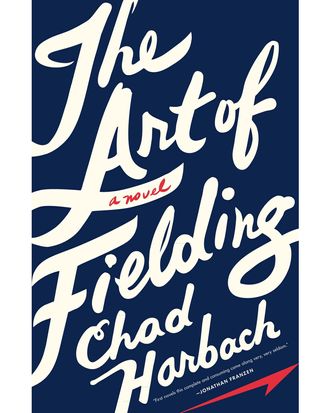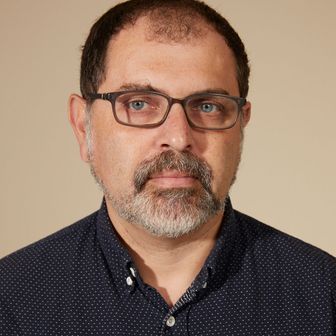
Two weeks ago, a restaurateur named Charles Green filed suit in a New York court against Chad Harbach. In it, he alleged that the author of the 2011 breakout college baseball novel, The Art of Fielding, “misappropriated” dozens of elements, large and small, from Green’s unpublished college baseball novel, Bucky’s 9th. Green’s suit is vague on how Harbach accessed his still-unpublished manuscript, but his governing theory is based on a short e-book by Harbach’s close friend, the writer Keith Gessen, who says Harbach’s long-gestating, meandering labor of love was mysteriously “transformed” around 2009 into a major literary work. That transformation, Green alleges, came courtesy of some friend who passed Harbach a copy of Bucky’s 9th, which Green’s agent had circulated widely (and unsuccessfully) to publishers in 2006 and 2007.
Most allegations of literary plagiarism arrive as a bolt from the blue, and a big question trailing Green’s suit has been: Why now, six years later? One answer is that a film of Fielding is in development, and Green is seeking an injunction, arguing that its release would doom his unpublished novel for good. But another is that there’s nothing new about his charges at all. To members of Harbach’s and Gessen’s social circle — a subset of literary New York revolving around their journal, n+1 — Green’s allegations have been a low-level menace for years. Nor was the suit breaking news to the journalists Green has pitched assiduously since 2013. For us, it was something more like the Steele (a.k.a. “pee tape”) Dossier: a set of accusations likely too good to be true, disseminated to one outlet after another that knew better than to publish a damaging story with no actual proof.
Bloomberg View’s Joe Nocera, formerly of the New York Times, was one of those journalists. “I never pursued the story,” Nocera wrote in a piece this week after the lawsuit became public. Nocera went back and read Harbach’s 2004 MFA thesis for the University of Virginia (roughly half of his finished novel, predating the alleged theft) and found enough of the supposed cribs to conclude it’s all coincidence. The Washington Post’s Manuel Roig-Franzia was another of those journalists, and he pursued the story for more than a year, until it was killed in the summer of 2015 by higher-ups for lack of a smoking gun (or any gun at all).
I was another of those journalists, and I did not pursue the story. Nor did I meet with the accuser, but Nocera did, spending “enough time around Green to know he wasn’t crazy, or even particularly jealous.” I did speak to him for this story and would strongly agree with the first half of that assessment. Green explained his case to me as a maddening curiosity: “The volume and the types of overlaps between our two baseball novels has been inexplicable, and I’m simply looking for an explanation.” He was less measured via email two years ago when, dejected by the demise of the Post story, he sent New York a message with four attachments. The first document was “a succinct 19-page comparative analysis” of the similarities between The Art of Fielding and a 2006 draft of Bucky’s 9th — similarities that ranged from utterly trivial (a lilac-colored dress; two swimming pool metaphors) to the duplicate detail that got reporters to take him most seriously: the climactic beaning of a troubled baseball prodigy on an 0-2 count in the bottom of the ninth inning.
Green’s other documents consisted of a ten-page list of “addenda” to the “succinct” analysis, a 14-page narrative account of Green’s life so far, and finally, a detailed timeline of Green’s doomed courtship with the Washington Post. The Post refused to comment on the specifics of Green’s story, but sources familiar with the process confirmed his basic outline. In 2013, he brought those first two documents to his friend, Michael Abramowitz, a former national editor of the Post, who passed it along to the paper. Roig-Franzia took the assignment in early 2014. A few months later, the reporter called Harbach saying he wanted to talk about a book called Bucky’s 9th that had astonishing parallels to The Art of Fielding. Harbach curtly referred him to his agent, Chris Parris-Lamb. Green writes in his account that Harbach was “uncooperative,” but Harbach and Lamb did work to unearth not only Harbach’s MFA thesis but early draft excerpts from his thesis application in 2000. It’s true that they withheld other drafts, but a source close to Harbach says they didn’t know what Roig-Franzia was after; he’d failed to inform the author of what the parallels were, how Harbach was supposed to have seen Bucky’s 9th, or even who wrote Bucky’s 9th. Harbach didn’t hear back from Roig-Franzia for more than a year.
In the intervening months, the journalist pored over drafts of both books, visited Dallas — where Green owns a chain of pizzerias — and made progress on a draft of the article. By the fall of 2014, Green was losing patience and made the first of several threats to take his allegations to another outlet. Roig-Franzia strongly reassured him that the piece would run. On October 29, the reporter texted him: “Why, yes, that was me huddling with an editor talking about a certain unpublished manuscript at BEN BRADLEE’S FUNERAL.” Green replied, “Hoping you won’t be having the same conversation at mine.” (Roig-Franzia did not answer multiple calls and emails from New York.)
But something wasn’t sticking. According to Green, investigators at the Post spent the winter of 2015 trying to figure out how Harbach might have gained access to Bucky’s 9th. Yet Green says he was repeatedly told the story would run “any day” — that it was laid out by a professional graphic designer, and ran to 220 column inches, and was vetted by a lawyer who found it “fascinating.” He grew skeptical and antsy.
A year is a long time to wait on a story, but Green’s impatience sounded familiar to me; in the final paragraph of his pitch to New York, he wrote, “I’m done killing time.” If we or some other publication (he named Grantland) did not pick up the story very soon, he would, “with the help of” several important media friends, “blog the piece myself” and get his cousin’s PR firm to publicize the post. Indeed, nine months later, in July of 2016, the digital platform Medium published “Hit by a Pitch…Beaned by The Art of Fielding,” a carefully phrased excerpt of his personal account. His cousin’s efforts notwithstanding, few people noticed it.
But back in early June of 2015, the Post story looked imminent. For the first time in 13 months, Roig-Franzia contacted Harbach again. He’d read the MFA thesis but still had some questions. Eventually, he sent the author a list of 30 similarities. Parris-Lamb argued that 15 of them were already accounted for in the thesis, and in the ensuing days he let the Post know that there was a more complete draft of Fielding, last altered in March 2005, that contained even more. All but four of Roig-Franzia’s similarities were accounted for in that draft, and those four didn’t include anything significant — not the beaning and none of the essential plot points. That would destroy Green’s theory that his elements were stolen around 2007. (Green tells me they could have been stolen earlier — he’d shown previous incarnations, including a screenplay in the ’90s, to some agents and producers — a possibility left open in the lawsuit. Since he doesn’t actually know what happened, he’s open to other theories.)
While emailing back and forth about Harbach’s newer draft with Roig-Franzia and his editor, Ann Gerhart, Parris-Lamb started cc’ing Post executive editor Marty Baron. In a separate email, Baron reassured him there was “no rush” on the story. Gerhart asked for an appointment to see Harbach’s 2005 draft, but Parris-Lamb insisted that the paper first accept the 15 similarities in the MFA thesis as a nonissue and then — after confirming that the later draft contains the next 11 similarities — promise to drop the story altogether.
The Post couldn’t make that promise, but Parris-Lamb told them that even a piece concluding pure coincidence would do irreparable damage to Harbach’s reputation and leave the Post liable for defamation. He sent the paper a screenshot of the later draft’s time-stamp, but ultimately refused to share the document. It was valuable information to reserve in case of a suit.
Later in June, Green heard from Roig-Franzia that senior editors weren’t satisfied; without proof that Harbach had access to the manuscript, they wouldn’t run the story. Gerhart’s last contact with Harbach was in mid-July, and the appointment to view the 2005 draft was never set. Baron responded to New York’s request for comment by saying, “We don’t discuss internal editorial deliberations.” But he added that liability had nothing to do with the fate of the story: “We don’t withhold stories because of legal threats. We publish stories if we feel they meet all necessary standards for publication. If the standards aren’t met, we don’t publish them.”
Before taking his case to the press in 2013, Green had looked into copyright lawyers, but no one would take it on without charging a fortune up-front. After his Medium post failed to gain serious interest three years later, Green planned to self-publish Bucky’s 9th. Then the movie deal for Fielding was announced last May. “And I said, ‘That’s it,’” Green told me. “If that movie comes out, Bucky’s snuffed.’” So he finally decided to file the suit himself, with help from an insurance attorney he knew from high school. Because of copyright law’s high burden of proof and Green’s lack thereof, his case is much harder to win in a legal setting than in the court of public opinion. But Green told me he merely wants “to have the cloud removed” from his book — and to find out the truth. “I am hoping to gain a better understanding of how this happened,” he said.
Parris-Lamb released a statement last week promising that “time-stamped files” will exonerate Harbach. And in response to this story, he added a second: “I applaud the Washington Post, and whichever other news organizations have been approached by Mr. Green over the course of the past six years, for concluding that there is nothing newsworthy about his spurious claims. The Art of Fielding is entirely Chad’s creation, and he will always owe a deep debt of gratitude to the writers who inspired and informed it. Mr. Green is not among them.”





